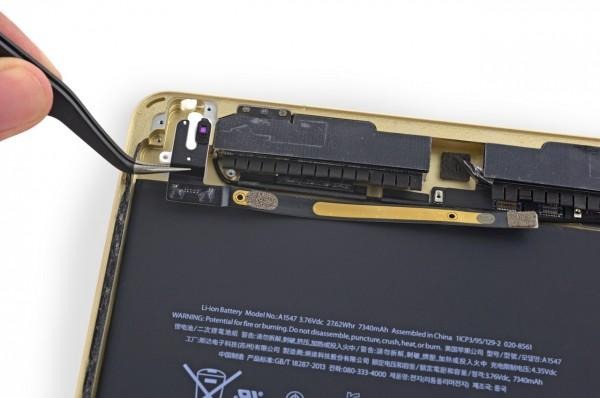iPad Air 2 teardown confirms Apple did not defy laws of physics
Wondering what mysteries are inside the iPad Air 2? Apple didn't leave itself much room for surprises in its new flagship tablet, with the 6.1 mm slate not only the company's thinnest, but also its most powerful. As we found in our review of the iPad Air 2, components like the 1.49GHz tri-core Apple A8X processor and the newly fully-laminated display certainly keep iOS 8.1 moving along swiftly, but the team over at iFixit are more intrigued about how they all fit together physically.
Perhaps unsurprising, but Apple's decision to laminate the cover glass, touch layer, and LCD together into a single sheet means the whole thing is stiffer than before. However, iFixit warns, that doesn't mean it won't flex if you pull at it incautiously, worth noting since pulling it free of the unibody chassis is the only way to gain access.
Once inside, there's design decisions borrowed from the iPhone 6 and iPhone 6 Plus, with Apple also changing how it snakes the display cables through.
Meanwhile, while we knew the 8-megapixel camera on the iPad Air 2 and the 8-megapixel camera on the iPhone 6 weren't the same, that's also confirmed in the teardown. The ambient light sensor system has gotten a little more complicated, too, with two rather than one as on the original iPad Air.

Of course, you can't compete with the laws of physics, and so the reduced internal space means something has to give.
In this case, it's the battery: Apple has fitted in a 7,340 mAh Li-ion pack this time around. In the original iPad Air, meanwhile, it was an 8,827 mAh pack.
Now, we found runtimes to be solid all the same – helped by software and hardware improvements in efficiency – so your actual experience with the iPad Air 2 may vary.
Unfortunately, all this sealing up and combining makes the iPad Air 2 just as hard to repair as its predecessor. If you want to replace the Lightning connector, for instance, you'll need to change the whole logic board as they're permanently attached.
SOURCE iFixit
